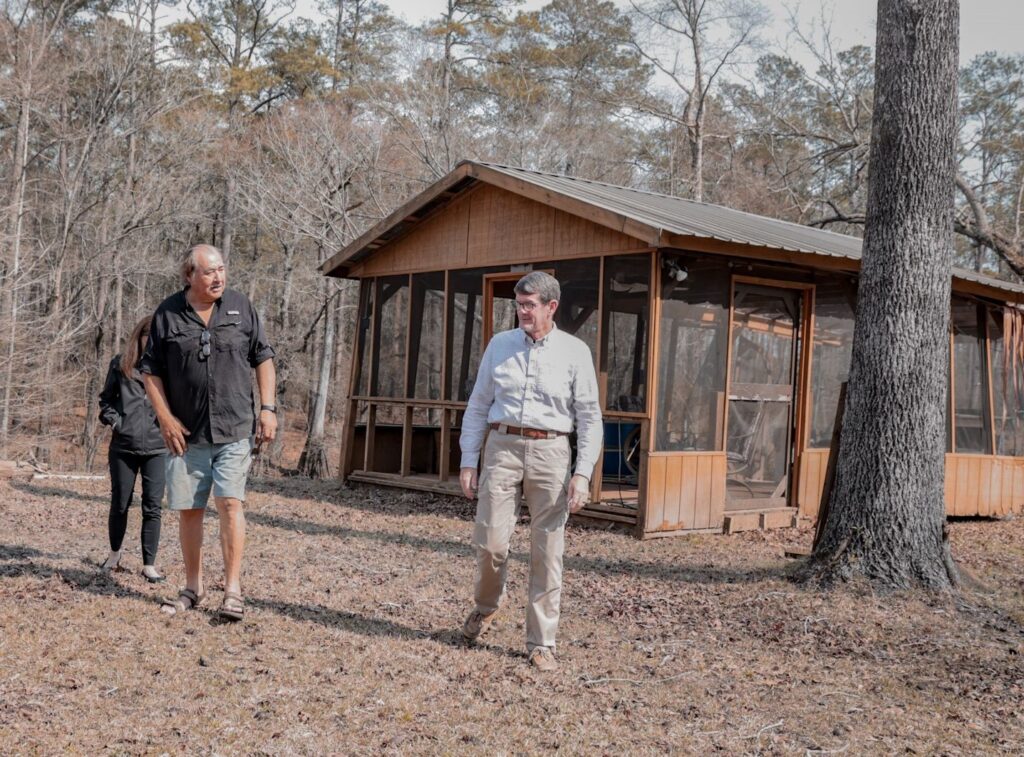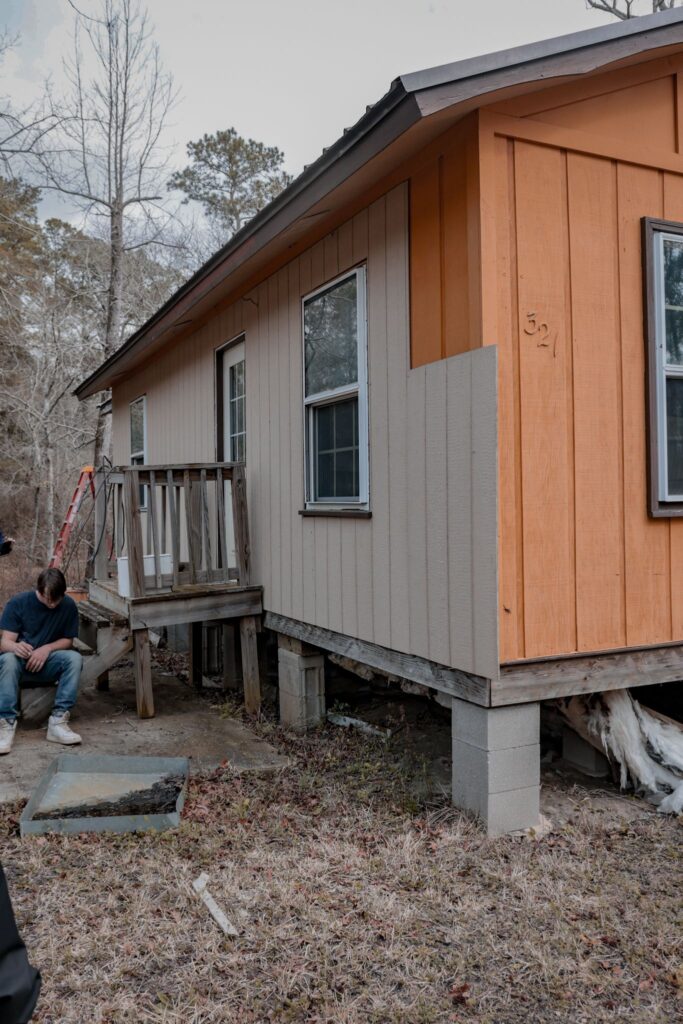
“I kept believing, kept believing. But they never did what they said they were supposed to do. It’s been promises and promises and lies and lies.”
Marcy Bea’s frustration is evident.
Pender County had 217 households active in the ReBuild NC program as of March 9, but just 14 of them had work completed and 12 others have work underway.
“It’s been promises and promises and lies and lies.”
Marcy Bea
Bea, Alverda Holmes, Willie Northern, and Robert Sault, along with their families, are among those 191 still waiting for actual renovation or rebuilding to begin.
Applicants for assistance go through eight steps in the ReBuild process: intake, eligibility review, duplication of benefits review, inspection and environmental, award determination, contract and bid work, construction, and completion.
The Northerns and the Holmeses are still in their hurricane-damaged homes, like most applicants. Unless they stay with family, pay for their own rental, or have been granted an emergency move-out designation, most families are not eligible for ReBuild’s Temporary Relocation Assistance (TRA) until the contract has been awarded and construction is set to begin. The Beas have been approved for emergency move-out status and are beginning the process. Sault has made it to contract and construction stage and is living in a hotel paid through TRA.

Their homes have been damaged by wind and water and often have compromised roofs, ceilings, walls, and floors. Mold often infests the homes.
Bea and her husband live in a mobile home outside of Burgaw that will be demolished and replaced with a newly constructed home. Her son, a freshman at Methodist University, lived there growing up and still stays there when home from college.
Rain penetrated the home through windowsills and the wind- and rain-damaged roof, ruining the ceiling, walls, and floor. Through the years of waiting for construction to begin, the home has deteriorated. There are holes in the floor. Bea covers them with rugs. She hides holes in the walls and crumbling sheetrock with posters. Mold is prevalent.
Bea is waiting for the work to go out to bid.
Alverda Holmes’ Maple Hill home also suffered water and wind damage in Hurricane Florence. Issues with her home include roof leaks, cracks in the ceiling, and soft floors. The roof still leaks, causing further damage. Her home, too, is infested with mold. She was denied an emergency move-out and is still living in the home.
“I’m staying here with the mold. My husband and I do what we can until we get out of here,” she said. “I’ve been waiting almost three years now.”
They are waiting for their project to go out for bidding. The home will be demolished and replaced with an elevated stick-built home. Holmes and her husband will move to a hotel when work begins.
Willie and Carolyn Northern are dealing with similar issues, including floors damaged by water and mold. They used their own resources to repair the roof and make other minor repairs before applying for assistance from ReBuild. Their home is considered a rehab—the floors are to be replaced, and the bathroom and kitchen are to be repaired.
“We would get a call every 30 days or two months saying they didn’t have an update,” Willie Northern said. “The main thing is the communication— not being communicated with.”
The Northerns are still living in their home in Atkinson. A contractor recently conducted the walk-through evaluation of the home, so they are waiting for word that they can start packing their belongings into a PODS portable storage unit and move to a hotel.
Unlike the wind-and-rain damaged houses, Robert Sault’s home, which sits on the banks of the Northeast Cape Fear River, flooded as the river rose from Hurricane Florence. Sault had experienced hurricane flooding before. Fran’s waters reached the bottom of the house, Floyd’s were higher up to the windows, and finally, with Florence, the river level topped the windows of the small bungalow.
He lived in the screened-in porch on the back of the house until construction was slated to begin. Sault entered the construction phase in January 2022 and has been living in a hotel while waiting for his modular home to arrive and placed on an elevated base to protect it from future flooding.
Another issue that strains ReBuild applicants is that the damage to their homes often worsens over time as they aren’t allowed to make repairs while they are in the program.
“If you repair the house, you’ll go backward in the program,” Bea said of what she was told if she made repairs to her home when the ceiling fell. “You’re stuck in a house you can’t repair.”
A Rebuild representative explained, ”There are some repairs that would be too costly or difficult for the homeowner to make. That is one of the many reasons why we have the emergency move out policy so that homeowners do not have to live in unsafe conditions. Sometimes, depending on the needs our inspectors see when they visit, they might make an internal referral for a National Volunteer Organization Active in Disaster (VOAD) partner to come out and fix items so that the home can be safe for the homeowner.”
Pender County residents who have been waiting for four-plus years to have their homes repaired or rebuilt are ready to move forward.
“I’m 70 years of age,” Sault said. “I’d really like to get back in my house.”